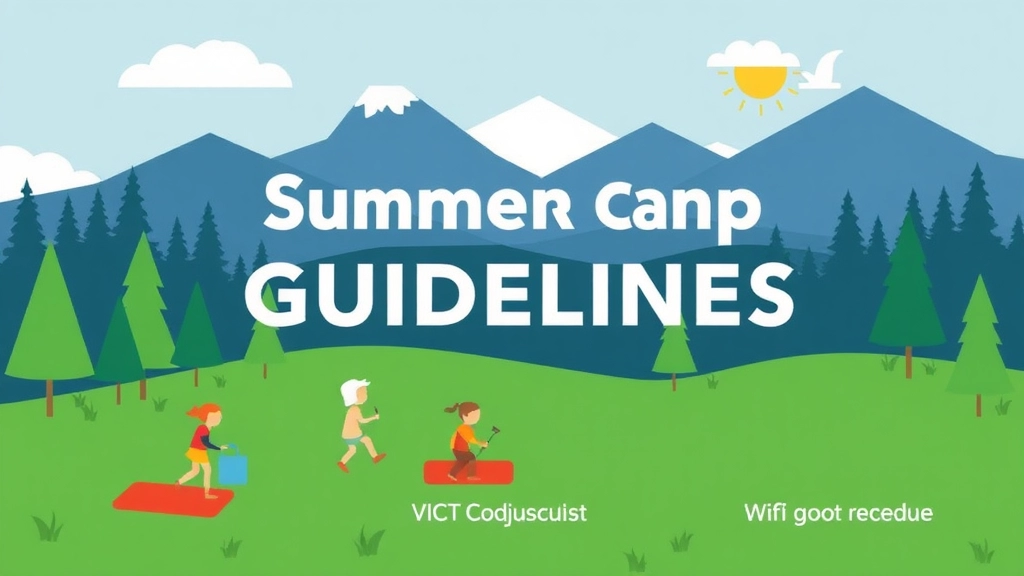Summer Camp Guidelines
Summer camps are a rite of passage for many kids, offering a blend of fun, adventure, and learning. But behind the scenes, ensuring a safe and enriching experience requires meticulous planning and strict adherence to guidelines. This article delves into the comprehensive “Summer Camp Guidelines” that cover everything from essential safety rules to emergency plans, providing peace of mind for parents and a structured environment for campers.
Crucial Aspects of Summer Camp Safety
We’ll explore crucial aspects such as:
- Health and medical guidelines
- Staff-to-camper ratios
- Supervision standards
Additional Considerations
Additionally, we’ll discuss the importance of:
- Background checks
- Training requirements for staff
- Safety protocols for high-risk activities
Other Important Topics
We’ll also highlight:
- Age-appropriate activities
- Hygiene and sanitation practices
- Sun safety measures
- Effective communication channels between parents and camp staff
By the end of this article, you’ll have a thorough understanding of how to create a safe, enjoyable, and memorable summer camp experience for all involved.
Essential Safety Rules for Summer Camps
Hey, have you ever sent your kid to a summer camp and found yourself worrying about their safety? You’re not alone. Let’s dive into the essential safety rules for summer camps that every parent and camp staff should know.
Why Safety Rules Matter
First off, why are these rules so crucial? Well, camps are about fun, but safety is the foundation. Without it, all the fun goes out the window. So, here’s what you need to know.
Basic Safety Guidelines
- Emergency Contacts: Always have a list of emergency contacts. Make sure everyone knows who to call and when.
- First Aid Kits: These should be everywhereâcabins, dining halls, and activity areas. You never know when someone might need a band-aid or worse.
- Buddy System: This one’s classic for a reason. Pairing up kids ensures they look out for each other.
- Clear Boundaries: Kids need to know where they can and can’t go. This isn’t about being strict; it’s about keeping them safe.
For more tips on ensuring a safe and enjoyable camp experience, check out our guide on summer camp transportation safety.
Supervision is Key
- Staff Training: Every staff member should know basic safety protocols. This isn’t optional; it’s mandatory.
- Regular Headcounts: Keep track of campers. You don’t want to realise someone’s missing after it’s too late.
Real-Life Example
Imagine this: A camper wanders off during a hike. Panic sets in. But because of the buddy system and regular headcounts, they’re quickly found. That’s the power of following these rules.
Looking for more ways to enhance camp safety? Consider implementing shuttle bus services for secure transportation.
Keeping It Engaging
Alright, let’s keep it real. Safety talks can be dull, but they don’t have to be. Use stories, examples, and even games to teach these rules. Make it engaging so kids actually remember them.
Health and Medical Guidelines for Campers
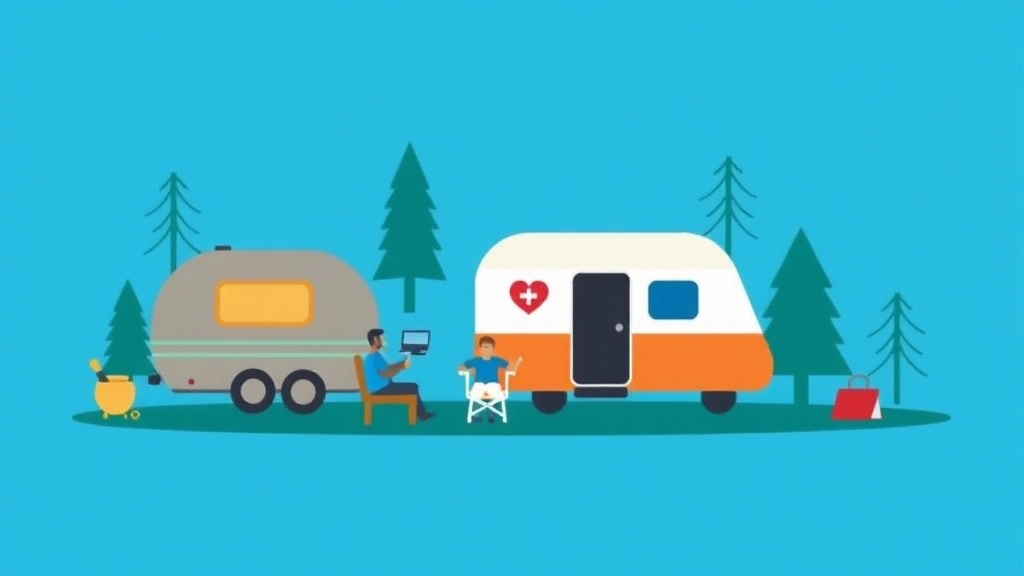
Worried about your child’s well-being at summer camp?
You’re not alone.
Every parent wants to ensure their kid is safe and healthy while having fun.
Let’s break down some essential health and medical guidelines for campers.
Health Checks and Medical Forms
First things first, health checks.
Before camp starts, every camper should have a medical check-up.
Why?
To catch any issues early.
Make sure to fill out medical forms accurately.
Include:
- Allergies
- Medications
- Special dietary needs
Medications and First Aid
Medications need to be managed properly.
Camp staff should:
- Store medications securely
- Administer them as prescribed
- Keep detailed records
And don’t forget first aid.
Every camp should have a well-stocked first aid kit and trained staff.
Hydration and Nutrition
Hydration is key, especially in the summer heat.
Encourage kids to drink water frequently.
Nutrition matters too.
Balanced meals keep energy levels up and spirits high.
Sun Safety
Sunburns can ruin a good time.
Make sure campers use sunscreen with a high SPF.
Reapply it throughout the day.
Wear hats and sunglasses for extra protection.
Mental Health Awareness
Mental health is as important as physical health.
Staff should be trained to recognize signs of anxiety or stress.
Create a supportive environment where kids feel comfortable expressing their feelings.
Emergency Contact Information
Always have emergency contact information on hand.
Keep it easily accessible.
In case something happens, parents need to be reachable.
Regular Health Updates
Regular updates keep everyone in the loop.
Send out health bulletins to parents.
Let them know about any health concerns or incidents.
Related Topics
- Essential Safety Rules for Summer Camps
- Sun Safety Measures and Hydration Practices
- Emergency Plans and Incident Response Strategies
Feel better now?
Good.
Let’s make this summer camp experience the best one yet.
Staff-to-Camper Ratios and Supervision Standards
Ever wondered why some summer camps seem to run like well-oiled machines while others feel like chaotic free-for-alls? The secret sauce often boils down to staff-to-camper ratios and supervision standards. This isn’t just about ticking boxes; it’s about ensuring every kid gets the attention they need to stay safe and have fun.
Why Do Ratios Matter?
Let’s cut to the chaseâstaff-to-camper ratios are crucial. Imagine running a camp with one adult for every 20 kids. Absolute mayhem, right? Now picture it with one adult for every five kids. See the difference? The right ratio ensures:
- Safety: More eyes mean fewer accidents.
- Personal Attention: Kids get the support they need.
- Effective Supervision: Staff can actually manage activities instead of just trying to keep up.
What Are the Ideal Ratios?
There’s no hard and fast rule, but generally speaking, the younger the campers, the lower the ratio needs to be. Here’s a quick breakdown:
- Ages 4-5: 1 staff member for every 5 campers
- Ages 6-8: 1 staff member for every 6 campers
- Ages 9-14: 1 staff member for every 8 campers
- Ages 15-18: 1 staff member for every 10 campers
These numbers aren’t just pulled out of thin air; they’re based on what works best for keeping kids safe and engaged.
Supervision Standards: More Than Just Ratios
Ratios are just the beginning. Supervision standards are equally important. Here’s what solid supervision looks like:
- Active Engagement: Staff should be actively involved in activities, not just standing on the sidelines.
- Constant Vigilance: Eyes on the kids at all times. No exceptions.
- Clear Roles: Every staff member should know their responsibilities.
- Regular Headcounts: Frequent headcounts ensure no one goes missing.
- Communication: Walkie-talkies or mobile phones for instant communication among staff.
Real-Life Example
I remember a camp I worked at a few years back. We had a ratio of 1:6 for the 7-year-olds. One day, during a nature hike, one of the kids tripped and scraped his knee. Because we had enough staff, one counsellor could stay with him while the rest continued the hike. No one was left unattended, and the situation was handled smoothly. That’s the power of proper ratios and supervision.
Internal Links for More Info
- For safety protocols during high-risk activities, check out our Summer Camp Swimming: Fun, Safety, and Tips.
- Curious about staff training? Dive into our Background Checks and Training Requirements for Staff.
Background Checks and Training Requirements for Staff
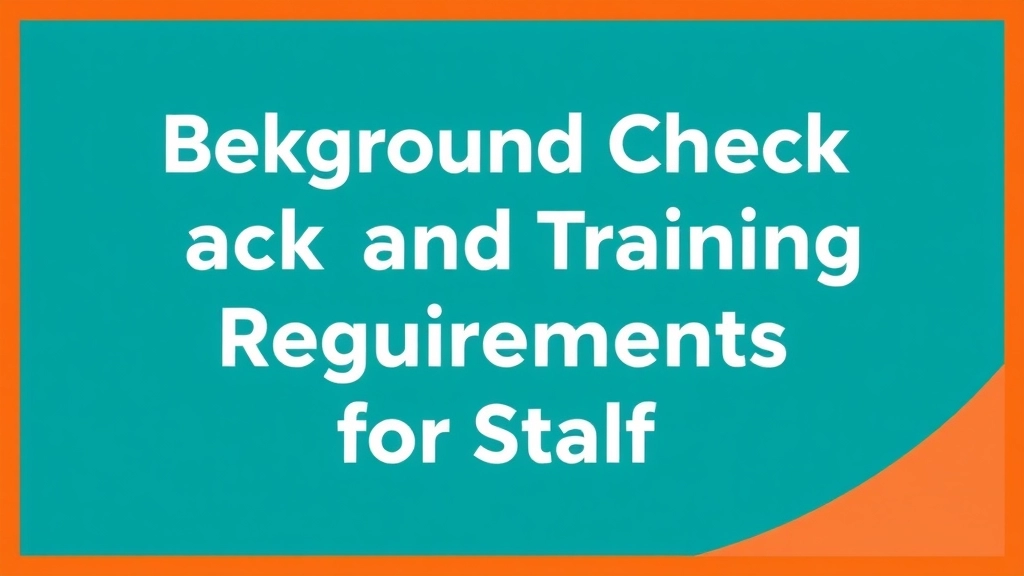
Ever wonder if the people looking after your kids at camp are truly qualified?
It’s a big deal, right?
You want peace of mind knowing that your children are in safe hands.
Why Background Checks Matter
Let’s break it down.
- Safety First: Background checks ensure staff have clean records. No surprises.
- Trust Building: Knowing staff are vetted builds trust between parents and the camp.
Training: More Than Just a Box to Tick
Training isn’t just about ticking boxes.
It’s about ensuring staff know what they’re doing.
Here’s the scoop:
- First Aid: They should be ready for anything. Cuts, scrapes, or something more serious.
- Child Psychology: Understanding kids’ needs and behaviours is key.
- Activity-Specific Skills: Whether it’s rock climbing or archery, they need to know their stuff.
Real Stories, Real Impact
I remember a camp where a quick-thinking counsellor used their first-aid training to help a camper with a severe allergic reaction.
That’s the power of proper training.
The Checklist for Camps
When you’re choosing a camp, here’s what you should look for:
- Comprehensive Background Checks: No exceptions.
- Regular Training Sessions: Not just once and done.
- Emergency Preparedness: Drills and plans in place.
Background checks and training aren’t just formalities.
They’re essentials.
Safety Protocols for High-Risk Activities
Alright, let’s be real. When it comes to summer camps, high-risk activities are the ones that get everyone excited but also keep us up at night. We’re talking rock climbing, swimming, zip-liningâstuff that’s thrilling but can go south fast if we’re not careful. So, let’s dive into the nitty-gritty of how we can keep everyone safe while they’re having the time of their lives.
Why Are High-Risk Activities a Concern?
First off, why worry about high-risk activities? Simple. These activities have a higher chance of causing injuries. No one wants to deal with broken bones or worse, so it’s crucial to have solid safety protocols in place.
Key Safety Protocols
- Qualified Instructors: This one’s a no-brainer. Make sure the people leading these activities know their stuff. They should have the right certifications and experience. If you’re doing rock climbing, for instance, your instructor better be someone who’s scaled a few cliffs in their time.
- Proper Gear: Safety gear isn’t optional; it’s mandatory. Helmets, harnesses, life vestsâwhatever the activity calls for, make sure everyone has it and knows how to use it.
- Pre-Activity Briefings: Before anyone even thinks about climbing that rock wall or jumping into the lake, they need a thorough briefing. This includes:
- Rules and Guidelines: What’s allowed and what’s not.
- Emergency Procedures: What to do if something goes wrong.
- Skill Assessment: Ensuring everyone is up to the task.
- Supervision: Never underestimate the power of good supervision. Always have more than one adult overseeing high-risk activities. A good rule of thumb is to have at least two staff members present, no matter the group size.
- Buddy System: Pair up campers so they can look out for each other. It’s a simple but effective way to keep everyone in check.
- First Aid Readiness: Have a first aid kit on hand and make sure someone trained in first aid is always nearby. Quick response can make all the difference in an emergency.
- Regular Equipment Checks: Gear can wear out or get damaged. Regularly inspect all equipment to ensure it’s in top-notch condition.
Real Talk: Stories and Examples
Let me share a quick story. Last summer, we had this kid, Jake, who was super excited about zip-lining. Midway through the course, his harness felt a bit off. Because we had a trained instructor and a solid buddy system, we caught the issue before it became a problem. Jake got a new harness and finished the course safely, grinning from ear to ear.
For more tips on ensuring a fun and safe camp experience, check out our guide on fun, safe, and skill-focused summer camps. Additionally, if you’re looking for specific activities, our ultimate guide to summer camp volleyball offers great insights!
Age-Appropriate Activities and Their Importance

Ever worried about your kid getting bored or overwhelmed at camp?
I get it.
Choosing the right activities for different age groups is crucial.
Here’s why.
Why Age-Appropriate Activities Matter
Kids aren’t just mini-adults.
They have different needs, abilities, and interests.
Imagine a 7-year-old trying to keep up with a 15-year-old during a high-intensity game.
Not fun, right?
Benefits of Age-Appropriate Activities
- Engagement: Keeps kids interested and excited.
- Safety: Reduces the risk of injury.
- Development: Supports physical, emotional, and social growth.
- Confidence: Kids feel more capable and less frustrated.
How We Choose Activities
We break it down by age groups:
- Ages 5-7: Simple games, arts and crafts, nature walks.
- Ages 8-10: Team sports, basic swimming, scavenger hunts.
- Ages 11-13: Advanced sports, hiking, creative workshops.
- Ages 14-16: Leadership tasks, challenging sports, adventure activities.
Real Stories, Real Impact
Last summer, we had a group of 10-year-olds who were initially shy and hesitant.
By the end of the camp, they were leading team activities and making new friends.
All because we matched the activities to their age and skill level.
Keeping It Fresh
We constantly update our activities based on feedback.
Parents love it.
Kids love it.
And it makes our camp stand out.
Age-appropriate activities aren’t just a nice-to-have.
They’re essential.
They keep kids safe, engaged, and growing.
So, next time you’re choosing a camp, ask about the activities.
Make sure they’re a perfect fit for your child’s age.
Because that’s what makes a camp unforgettable.
And that’s what makes it worth it.
Want to know more about our camp activities? Check out our detailed guide here.
Stay safe and have fun!
Hygiene, Sanitation, and Environmental Cleanliness
Alright, let’s get real â hygiene, sanitation, and environmental cleanliness at summer camps are non-negotiable. We’re talking about keeping our kids safe and healthy while they’re out there having the time of their lives. But what does that actually look like? Let’s break it down.
Why Hygiene and Sanitation Matter
Ever worried about your kid catching something gross at camp? Yeah, me too. Kids are like little germ magnets, and when they’re all together, things can spread like wildfire. Here’s why hygiene and sanitation are crucial:
- Prevent Illness: Proper hygiene stops the spread of germs and keeps everyone healthy.
- Comfort: Clean environments are more comfortable and enjoyable for everyone.
- Safety: Reduces the risk of infections and other health issues.
Daily Hygiene Practices
So, how do we keep things clean? Simple daily routines can make a huge difference. Here’s what we focus on:
- Hand Washing: Before meals, after activities, and definitely after bathroom breaks.
- Shower Schedules: Regular showers to keep the grime and sweat at bay.
- Tooth Brushing: Twice a day, no exceptions.
- Clean Clothes: Fresh clothes every day â no recycling yesterday’s socks, folks.
Sanitation Protocols
But hygiene isn’t just about personal cleanliness. It’s also about keeping the camp environment spick and span. Here’s how we do it:
- Regular Cleaning: Daily cleaning of cabins, bathrooms, and common areas.
- Waste Management: Proper disposal of rubbish and recycling to keep the campgrounds tidy.
- Disinfection: High-touch surfaces like door handles, tables, and sports equipment get disinfected regularly.
Environmental Cleanliness
We’re not just looking at hygiene and sanitation; we’re also thinking about the bigger picture â the environment. Here’s how we keep it green and clean:
- Eco-Friendly Products: Using biodegradable soaps and cleaning supplies.
- Water Conservation: Encouraging campers to take shorter showers and turn off taps.
- Recycling Programmes: Bins for paper, plastics, and cans to reduce waste.
Real Talk: Stories from the Campground
Let me hit you with a story. Last summer, we had a camper who was a bit of a hygiene dodger. We’ll call him Jake. Jake hated showers and thought hand washing was for chumps. Long story short, Jake ended up with a nasty rash that could’ve been avoided with a bit of soap and water. Lesson learned â hygiene isn’t just a rule; it’s a lifesaver.
Quick Tips for Parents
Want to make sure your kiddo stays clean and healthy at camp? Here are some tips:
- Pack Essentials: Soap, shampoo, toothpaste, and a toothbrush.
- Label Everything: Prevent mix-ups and lost items.
- Teach Good Habits: Make sure they know the importance of hygiene before they go.
For more detailed tips on preparing for camp, check out our Ultimate Packing Checklist. And if you’re curious about what to expect on the first day, don’t miss our guide on What to Expect on the First Day of Summer Camp.
Sun Safety Measures and Hydration Practices
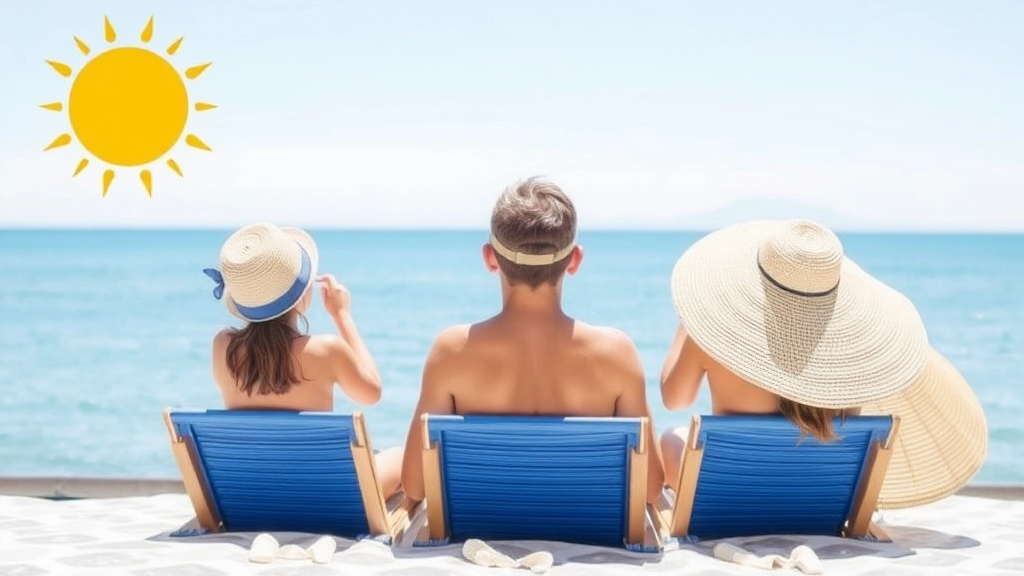
Ever been sunburned so bad you felt like a lobster? Yeah, not fun.
At summer camps, sun safety isn’t just a good idea—it’s a must.
Why Sun Safety Matters
Kids are out all day, running around, having a blast. But too much sun can lead to sunburn, heatstroke, and long-term skin damage.
Here’s how we keep them safe:
Sunscreen, Sunscreen, Sunscreen
- Apply SPF 30 or higher.
- Reapply every two hours.
- Don’t forget those easy-to-miss spots: ears, neck, and tops of feet.
Hats and Sunglasses
- Wide-brimmed hats offer the best protection.
- Sunglasses with UV protection are a game-changer.
Shade Breaks
- Schedule activities in shaded areas.
- Use tents or canopies if natural shade isn’t available.
Hydration Practices: Keeping Them Cool and Hydrated
Kids get so caught up in fun, they forget to drink water.
Dehydration can sneak up fast, so here’s what we do:
Regular Water Breaks
- Every 20 minutes, we call for a water break.
- Kids carry water bottles everywhere.
- We set up hydration stations around the camp.
Hydrating Foods
- Offer fruits like watermelon and oranges.
- Avoid salty snacks that can dehydrate.
Monitor for Signs of Dehydration
- Look out for dizziness, dry mouth, and fatigue.
- Encourage kids to speak up if they feel off.
Real Talk: What Happens If They Don’t?
I’ve seen kids get so dehydrated they had to sit out for the rest of the day. Not fun for them, and it’s a wake-up call for us.
Quick Recap
- Sunscreen: Apply and reapply.
- Hats and sunglasses: Essential gear.
- Shade breaks: Plan them in.
- Water breaks: Every 20 minutes.
- Hydrating foods: Keep them handy.
- Watch for dehydration signs: Stay alert.
We’re all about making sure the kids have a blast without the burn. Sun safety and hydration? Absolutely key.
Transportation and Off-Site Excursion Guidelines
Transportation and off-site excursions can be a blast for campers, but they also come with their own set of worries. How do we ensure everyone’s safe while still having a great time? Let’s break it down.
Common Concerns:
- “Is the bus driver qualified?”
- “What if a camper gets lost?”
- “How do we handle emergencies off-site?”
These are real questions that every parent and staff member has. So, let’s dive into how we tackle these issues head-on.
Qualified Drivers and Safe Vehicles
First things first, the driver. We only hire licensed and experienced drivers. No exceptions. Our vehicles? They undergo regular maintenance checks. Think of it like this: Would you drive a car that hasn’t been checked in a year? Neither would we.
Headcounts and Buddy Systems
Keeping track of everyone is crucial. Here’s our go-to strategy:
- Headcounts: Before leaving, after arriving, and multiple times during the trip.
- Buddy System: Each camper has a buddy. No one goes anywhere without their buddy. It’s simple but effective.
Emergency Preparedness
Emergencies can happen, but we’re always prepared:
- First-Aid Kits: Always on hand and fully stocked.
- Trained Staff: Every staff member knows basic first aid and emergency protocols.
- Emergency Contacts: Parents’ contact info is always accessible. Plus, we have a direct line to local emergency services.
Clear Itineraries and Communication
We keep everyone in the loop:
- Detailed Itineraries: Parents and campers know the plan for the day.
- Communication Channels: We use mobile phones and walkie-talkies for constant communication among staff. Parents get updates via text or email.
Real-Life Example
Last summer, we had a trip to a local museum. One camper felt unwell. Thanks to our prepared staff and clear communication lines, we quickly contacted the parents and handled the situation smoothly. The camper was back to enjoying camp activities the next day.
Supervision Ratios
We stick to strict staff-to-camper ratios. For off-site trips, it’s usually 1:5. This ensures that each camper gets the attention they need. Plus, more eyes mean better safety.
Behaviour Expectations
We set clear rules for off-site behaviour:
- Stay with the group: No wandering off.
- Listen to staff: Instructions are for everyone’s safety.
- Respect the venue: Whether it’s a museum or a park, we leave it as we found it.
For more tips on organizing a safe and enjoyable trip, check out our charter bus tips. Additionally, if you’re looking for inspiration on fun activities during the excursions, our top summer camp games and activities guide is a must-read.
Communication Channels Between Parents and Camp Staff
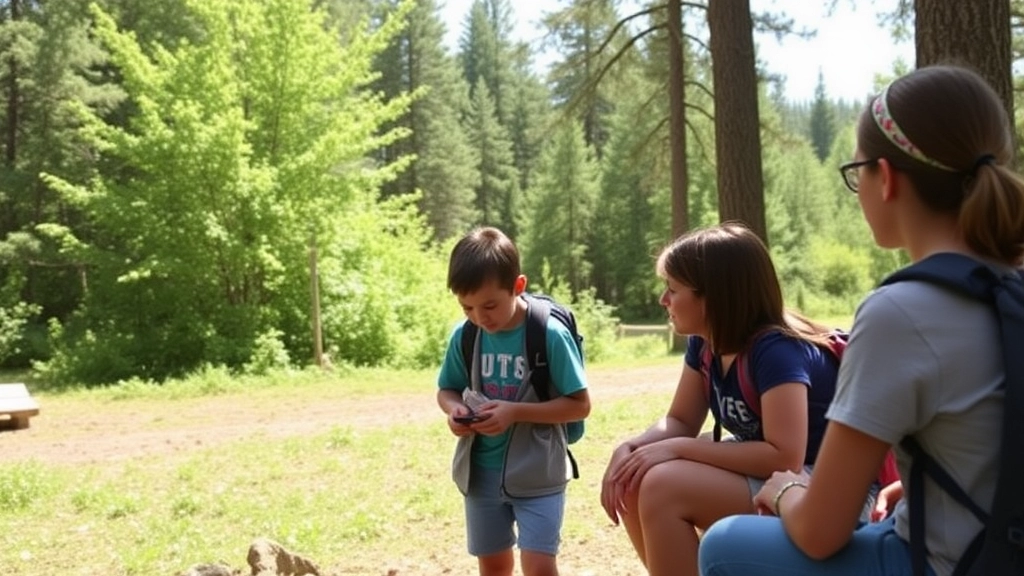
Ever worried if your kid is doing alright at camp? You’re not alone.
Parents often fret about their child’s well-being away from home.
So, how do we keep everyone in the loop?
Open Lines of Communication
First things first: clear, open lines of communication.
Parents should know how to reach camp staff and vice versa.
Here’s how we do it:
- Daily Updates: A quick email or text update about the day’s activities.
- Emergency Contacts: Always have a list of emergency contacts handy.
- Scheduled Calls: Set times when parents can call to check in.
Regular Updates and Reports
Parents love to know what their kids are up to.
Weekly newsletters can be a great way to share:
- Highlights of the week
- Upcoming events
- Any changes in schedules
Real-Time Alerts
For urgent matters, real-time alerts are crucial.
We use:
- SMS for immediate updates
- Apps that allow instant messaging
Parent-Staff Meetings
Face-to-face meetings (or Zoom calls) can be invaluable.
Set up:
- Pre-camp orientation sessions
- Mid-camp progress meetings
- Post-camp feedback sessions
Two-Way Feedback
Communication is a two-way street.
Encourage parents to share their thoughts:
- Feedback forms
- Surveys
- Suggestion boxes
Example: The Smith Family
The Smiths were worried about their son Timmy’s first camp experience.
We set up a daily text update system.
By the end of the week, they felt more connected and reassured.
Tech Tools
Leverage technology to keep the communication flowing.
Apps like Remind or ClassDojo can be game-changers.
They offer:
- Instant updates
- Photo sharing
- Direct messaging
Managing Behavioural Expectations and Camp Chores
Real Concerns: What’s on Your Mind?
Ever wondered how to keep kids in check at summer camp without turning into a drill sergeant? We’ve all been there. Balancing fun and discipline is a tightrope walk. How do you ensure campers follow the rules while having the time of their lives? Let’s dive in.
Setting the Stage: Why Behavioural Expectations Matter
At camp, behavioural expectations are crucial. They ensure everyone’s safe, happy, and engaged. But we’re not talking about military precision here. It’s about creating an environment where respect and fun coexist.
How Do We Do It?
Clear Communication
- Set Expectations Early: From day one, make sure campers know what’s expected. Use simple language and examples.
- Consistent Messaging: Keep the rules consistent across all activities. Mixed messages lead to confusion.
Positive Reinforcement
- Reward Good Behaviour: A little encouragement goes a long way. Recognise positive actions with praise or small rewards.
- Peer Recognition: Let campers acknowledge each other’s good deeds. It builds a supportive community.
Camp Chores: More Than Just Tasks
Chores at camp aren’t just about tidying up. They’re about teaching responsibility and teamwork. Here’s how we make chores engaging:
Rotating Responsibilities
- Fair Rotation: Everyone gets a turn at different tasks. It keeps things fair and interesting.
- Team Effort: Group chores foster collaboration and make tasks less daunting.
Making It Fun
- Gamify Tasks: Turn chores into games or challenges. Who can clean up the fastest? Who can make the best bed?
- Celebrate Success: When the chores are done, celebrate with a fun activity or a treat.
Real Stories, Real Impact
Let me share a quick story. Last summer, we had a camper named Sam. Sam wasn’t thrilled about chores. But once we turned it into a team challenge, he was all in. By the end of camp, Sam was leading his team in tidying up and even came up with new ways to make it fun. It’s amazing what a little creativity can do.
If you’re looking for more ways to make camp a memorable experience, check out our creative cabin name ideas and top games to play at summer camp.
Guidelines for the Use of Electronics and Personal Items
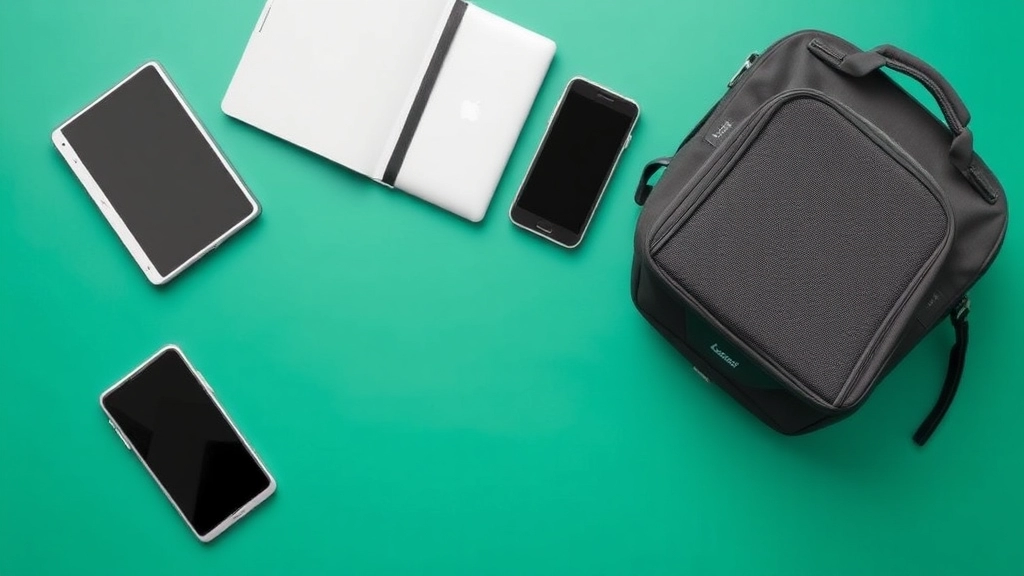
Ever wondered how to handle electronics at camp without losing your mind?
I get it.
We’re all attached to our gadgets these days, but when it comes to summer camp, there’s a balance to strike.
Let’s dive in.
Why Limit Electronics?
Connection with Nature:
Kids need a break from screens to connect with nature and each other.
Safety Concerns:
Electronics can be a distraction from camp activities, and there’s always the risk of loss or damage.
Setting Clear Rules
Establish Boundaries:
- Designate “Tech-Free” Zones: Keep certain areas tech-free to encourage interaction.
- Set Time Limits: Allow electronics during specific times, like evenings.
Communication Devices:
- Emergency Use Only: Phones should be for emergencies, not Snapchat.
- Collect and Return: Consider collecting devices at the start and returning them at the end of the day.
Personal Items: What’s Allowed?
Essentials Only:
Keep it simple. Think toiletries and a few changes of clothes.
Label Everything:
Lost and found is a real thing. Labels help.
Prohibited Items:
- Valuables: Leave expensive jewellery and gadgets at home.
- Dangerous Items: No knives or anything that can harm.
Real Stories, Real Solutions
One camp I know had a kid bring a tablet, and it vanished on day two.
The stress? Unreal.
They switched to a “no electronics” policy, and guess what?
Parents and kids loved it.
Electronics have their place, but camp is about unplugging and diving into new experiences.
Let’s keep it simple and fun.
Emergency Plans and Incident Response Strategies
Ever worried about what happens if an emergency strikes at summer camp?
Yeah, me too.
Let’s dive into how we can keep our kids safe and sound, even when things go sideways.
Why Emergency Plans Matter
First off, having an emergency plan is non-negotiable.
Think about it.
Would you send your kid to a camp that wings it during a crisis?
Didn’t think so.
Here’s what a solid emergency plan should cover:
- Evacuation Routes: Know how to get everyone out safely.
- Communication Protocols: Who calls who, and when.
- First Aid Stations: Locations and staff trained to handle injuries.
Types of Emergencies to Prepare For
Not all emergencies are created equal.
We need plans for:
- Natural Disasters: Floods, storms, and fires.
- Medical Emergencies: Allergic reactions, injuries, or sudden illnesses.
- Security Threats: Intruders or any form of violence.
Real-Life Example
Let me paint you a picture.
Last summer, a camp I know had a sudden storm.
Their emergency plan?
Spot on.
Everyone knew where to go, what to do, and who to call.
No panic, just action.
That’s the kind of prep we’re talking about.
Incident Response Strategies
Now, let’s get into the nitty-gritty.
When an incident happens, here’s the playbook:
- Immediate Assessment: Figure out what’s going on ASAP.
- Alert the Team: Use those communication protocols.
- Evacuate or Lockdown: Depending on the situation.
- Medical Intervention: First aid or call emergency services.
- Parent Notification: Keep them in the loop, always.
Training is Key
You can’t just have a plan.
You need to train for it.
Regular drills make sure everyone knows their role.
Think of it like a fire drill at school.
But for everything.
Keeping it Fresh
Plans can get outdated.
Review and update them regularly.
New risks pop up, and old ones evolve.
Stay ahead of the curve.
For more tips on ensuring a fun and safe camp experience, check out our guide on top sleepaway camps and how they manage safety protocols. Additionally, our article on summer camp volleyball covers how sports camps handle emergencies and keep kids safe.
FAQs on Summer Camp Guidelines
What health checks are required before camp?
Before camp starts, every camper should have a medical check-up to catch any issues early. Make sure to fill out medical forms accurately, including details about allergies, medications, and special dietary needs.
How are medications managed at camp?
Camp staff should store medications securely, administer them as prescribed, and keep detailed records. A well-stocked first aid kit and trained staff are also essential.
What measures are in place for sun safety?
Campers should use sunscreen with a high SPF, reapply it throughout the day, and wear hats and sunglasses for extra protection. Activities should be scheduled in shaded areas whenever possible.
How is hydration ensured at camp?
Regular water breaks are scheduled every 20 minutes, and kids are encouraged to carry water bottles. Hydrating foods like watermelon and oranges are offered, and staff monitor for signs of dehydration.
What types of activities are provided for different age groups?
Activities are tailored to different age groups to ensure they are engaging, safe, and developmentally appropriate. For example, younger kids might enjoy simple games and nature walks, while older kids might participate in advanced sports and leadership tasks.
What kind of training do camp staff undergo?
Staff undergo comprehensive background checks and receive training in first aid, child psychology, and activity-specific skills. Regular training sessions and emergency preparedness drills are also conducted.
How can parents communicate with camp staff?
Clear, open lines of communication are maintained through daily updates, emergency contacts, and scheduled calls. Weekly newsletters and real-time alerts via SMS or apps are also used to keep parents informed.
What are the guidelines for electronics and personal items at camp?
Electronics should be limited to encourage interaction and connection with nature. Designate “tech-free” zones and set specific times for electronics use. Personal items should be labeled, and valuables or dangerous items should be left at home.
What steps are taken to ensure mental health awareness at camp?
Staff are trained to recognize signs of anxiety or stress and create a supportive environment where kids feel comfortable expressing their feelings. Regular health updates are also sent to parents to keep them informed.
How are emergency situations handled at camp?
Emergency contact information is always on hand and easily accessible. Staff are trained in emergency response strategies, and regular drills are conducted to ensure preparedness.
References
-
CDC – Child Safety and Injury Prevention
-
AAP – Summer Safety Tips
-
HealthyChildren.org – Summer Safety Tips

